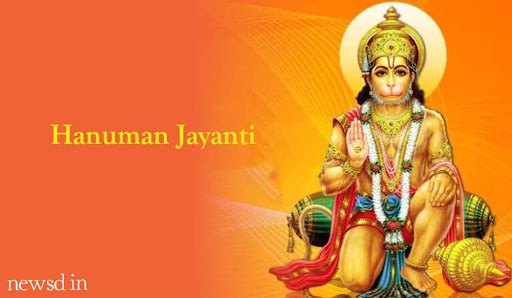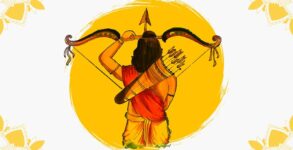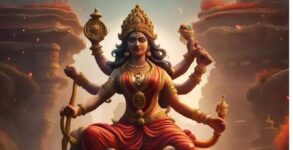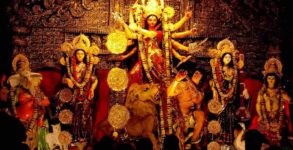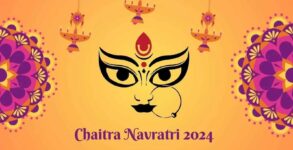Hanuman Jayanti 2023: Hanuman Jayanti (Thursday, April 6, 2023) is celebrated as Lord Hanuman’s birthday. On this day, the most important consideration is how to worship Lord Hanuman. In general, the festival is celebrated in Chaitra (April-May) or Vaishakha (September-October) on Chaitra Purnima. (May-June). If you travel across the land of Bharata (India), you will notice that different people worship Lord Hanuman in various ways. In northern India, Chaitra Purnima is the most widely observed festival. In southern India, Andhra Pradesh and Telangana celebrate it for forty-one days beginning on Chaitra Purnima and ending on the tenth day of Vaishakha Month. (Krishna Paksha). People in Tamil Nadu observe it as Hanumath Jayanthi on Margashirsha Amavasya (December-January), while those in Karnataka observe it as Hanuman Vratam on Shukla Paksha Trayodashi in the same month.
Hanuman Jayanti 2023: Date and Time
| Tithi and Shubh Muhurat | Date and Time |
| Purnima Tithi Begins | April 05, 2023 – 09:19 AM |
| Purnima Tithi Ends | April 06, 2023 – 10:04 AM |
| Shubh Muhurat | 06:06 AM to 07:40 AM
10:49 AM to12:23 PM 12:23 PM to 01:58 PM 01:58 PM to 03:32 PM 05:07 PM to 06:41 PM 06:41 PM to 08:07 PM |
This day is notable for the ritualistic and scriptural worship of Lord Hanuman, the reading of the Hanuman Chalisa, the Ramayana, and the Mahabharata, as well as fasting and devotional service. It is said that one can only approach Lord Rama through Hanuman, as Hanuman displayed the ideal combination of devotion, bravery, intelligence, and submission to Lord Rama. Only he can easily alleviate your mental, emotional, and physical sufferings.
Why is Hanuman Jayanti a holiday?
Lord Hanuman is said to have the ability to assume any form voluntarily, use rocks, move mountains, dash through the air, and compete with Garuda in terms of flight speed. He is revered as a god who possesses supernatural powers and the ability to vanquish evil spirits. Hanuman, who assisted Lord Rama in his mission to eradicate evil forces, is one of the most popular Hindu deities. He is believed to be an incarnation or avatar of Lord Shiva, and he embodies strength, resolve, and loyalty.
Worship & Fasting Procedure
You likely have questions about how to celebrate Hanuman Jayanti. Also listed below are the Vrat (fasting) and Puja Vidhi (worship rituals):
- The Tatkalik Tithi (Ratrivyapini) is observed during this fast.
- Remember Ram-Sita and Hanuman the night preceding the fast, and sleep on the floor.
- After rising early, recall Ram-Sita and Hanuman once more.
- Very early in the morning, take a shower and get ready.
- Now, take Sankalp to the Vrat while holding water.
- After that, sit close to the Lord Hanuman statue or image placed in the east direction. Sit with your back to the east or north.
- Pray to Lord Hanuman in the most respectful manner possible.
- Moreover, worship him according to all the Shodashopachar rituals (the 16 rites).
Puja Vidhi:
Lord Hanuman’s birthday is observed on the Full Moon of Chaitra month. (April). There are numerous methods for worshipping Hanuman. People visit Hanuman temples on this holiday to worship him with religious offerings. To the worshippers, the temple priests or pujaris distribute prasadam such as flowers, sweets, coconuts, udi (sacred ash), and Ganga Jal (holy waters of the Ganges).
On his birthday, we celebrate the birth of Lord Hanuman. The essence of worshipping his divinity, his childhood activities, his heroic deeds, and his ultimate submission to his master Ramachandra’s lotus feet remains the same in all states. There are two methods of worshipping Lord Hanuman: traditional worship and meditation on Hanuman’s attributes.
Hanuman Jayanti: Wishes, messages, and quotes to share with loved ones on this festival
Sacred Worship (traditional)
- Light a lamp containing mustard oil and recite: “Om shree Ramdut Hanumate Namah: Deepam Darshayami”
- Present mustard oil, a coconut, and a betel leaf garland (21, 31 or 51).
- Offer Lord Hanuman some sindoor with the mantra: Om Shree Ramdut Hanumate Namah: Gandham Samarpayami.
- Present some flowers (hibiscus, jasmine, or dhatura) accompanied by the mantra: Om Shree Ramdut Hanumate Namah: Pushpam Samarpyami.
- Present dhoop and recite the following: Om shree Ramdut Hanumate Namah: Dhoopam Agrapayami
- Walk around the idol while reciting the Hanuman Chalisa. If circumambulation is not possible, recite the mantra Om Hanumante Namah. Then, take a seat and read from your prayer book the Chalisa.
- Present sweets such as Laddu and recite: “Om shree Ramdut Hanumate Namah: Naivaidyam Nivedayami”
On Hanuman Jayanti, one can honour Hanuman in this manner. In fact, one can regularly worship him in this manner. If this is not possible, the alternative is to meditate. Meditation does not involve closing one’s eyes and focusing on nothingness. No. It entails learning more about Hanuman and his characteristics and remembering them. One can simply read religious texts such as the Ramayana or hear about Lord Hanuman’s life from a spiritual master. Hanuman’s greatest quality is his submission to his master, Lord Rama. Lord Hanuman exemplified both humility and punishment for wrongdoers. Hanuman never left a stone unturned when he defeated his adversaries, and he always defended sages and the virtuous.
Rudraksha bead and Hanuman:
This is one of the most effective methods for maintaining contact with the divine energies of the Absolute Truth. Rudraksha beads symbolise the all-beneficent Shiva. All of the beads, from One Mukhi to Twenty Mukhis, are governed by gods. A Fourteen Mukhi Rudraksha bead is personally governed by Lord Hanuman. Hanuman was the divine incarnation of Shiva who took part in Lord Rama’s earthly pastime. On Hanuman Jayanti, it is a fortunate custom to wear Fourteen Mukhi Rudraksha beads. This bead provides enhanced willpower, sensory control, mental equilibrium, strength, and courage because it represents excellence, victory, and success. A Fourteen Mukhi Rudraksha bead can be worn as a bracelet, a mala, or a pendant.
Hanuman Jayanti 2023: Significance
It is believed that Lord Hanuman is an incarnation of Lord Shiva. He was born to his parents, Vanar Raj Kesari and Anjani. He was born for the sole purpose of serving Lord Shri Ram and is an ardent devotee of Lord Rama. According to the Hindu Scriptures, as an immortal or chiranjeevi, he is still present on earth. Lord Hanuman Ji has several names such as Bajrangbali, Sundar, Maruti Nandan, Pavan Putra, Anjani Nandan and Sankat Mochan. As the possessor of Ashta Siddhi and Nav Niddhi, he is portrayed as powerful, courageous, and capable of accomplishing the impossible.
It is believed that Lord Hanuman bestows great success and happiness on those who worship him. Lord Hanuman exemplifies Loyalty and Devotion better than anyone else.

